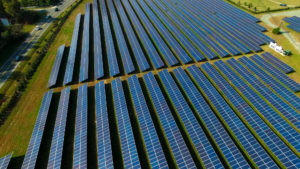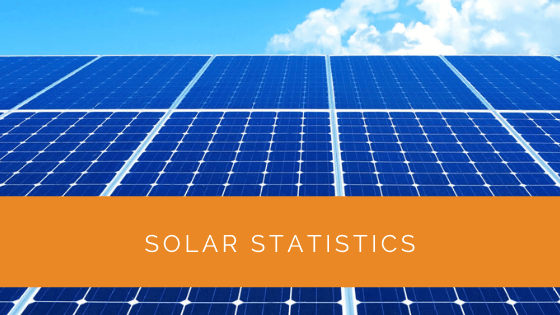Over the last few decades, the use of solar energy has significantly increased in the United Kingdom. This could be credited to the accessibility of solar panel systems and the drastic decrease in installation and maintenance costs over the years.
Additionally, many people are trying to use greener energy sources while controlling their energy consumption. Thus, they are considering switching to solar power or adopting a more integrated power consumption model.
This approach has helped people lessen their carbon footprint significantly. Studies show that more and more people are eager to get solar panel installations in their homes today, and the number will only keep increasing.
With this growth trajectory, clean energy will soon be a significant source of electricity worldwide. Here’s everything you need to know about the adaptation of solar energy globally.
Contents
- 1 What do You Mean by Solar Statistics
- 2 Total Energy Generated by Solar Panels
- 3 Solar Energy Emissions
- 4 Largest Solar Panel Farms
- 5 Case Study: Analyzing the Growth of Solar Capacity in the UK
- 6 Expert Insights From Our Solar Panel Installers About Solar Statistics
- 7 Discover the Power of Solar with Solar Panels Network
- 8 To Sum Up
What do You Mean by Solar Statistics
Solar statistics refer to the general solar energy trends studied and documented in an area. These trends are noted occasionally so that changes can be observed and further explored.
Globally, solar energy consumption has steadily risen over the last few years. People across continents are leaning towards using solar panels to power their homes, offices, and other properties. Studying these trends can help understand the future of solar energy consumption and production and thus facilitate research.
These statistics are also essential for those trying to create more sustainable solar energy set-ups for the future.
Total Energy Generated by Solar Panels
The total amount of energy generated by solar panels is highly subjective. This figure depends on the type of panels installed and their efficiency rates.
The United Kingdom was among the forerunners of generating electricity using solar energy in 2021. UK was responsible for generating 13.5 GW of power using solar energy. Until April 2021, the energy generation increased by 1.2% compared to 2020 figures.
The United Kingdom began upgrading its solar energy game at the beginning of 2021. In January 2021, the country installed about 1,064,148 solar panel systems, both small and large, which helped increase production by 12.6 MW. At the start of 2021, these installations helped boost the country’s overall solar energy production.
Solar power plantations of large sizes generated 44% of the total 13.5 GW. The UK is estimated to have over 454 large-scale installations, most of which have been recently installed. They do not even account for half the total amount of energy generated.
On the contrary, small-scale solar-powered projects generated a total production of 7.56 GW. These small-scale installations include homes, offices, and small buildings.
Solar Energy Emissions
Planet Earth has been fighting the battle against carbon emissions for years. Traditional forms of energy generation, like coal and other fossil fuels, emit large amounts of carbon dioxide. These emissions are very harmful to humans, animals, and ecological processes.
We have seen a decrease in the total carbon emissions by billions of metric tons. This can be credited to the brief shutting down of industries, markets, cars, etc.
Since then, the UK Government has taken serious steps to reduce carbon emissions. Under its ‘Contracts for Difference’ program, the United Kingdom aims at reaching net-zero carbon emissions before 2050.
The program has encouraged people to take greener and cleaner steps. Naturally, it has also sped up the adaptation of greener forms of energy, which is the best way to reduce carbon emissions.
The program encourages installing solar panel systems, wind farms, and water turbines to generate electricity. It is estimated that using solar panels alone can help reduce carbon emissions by 12%.
Indeed, a novel program like the Contracts for Difference requires elaborate planning and impeccable implementation. The government has taken adequate steps to ensure greener changes are made in the country.
For instance, the government of the United Kingdom has allotted £12 billion towards this program to take it further. The program will also help generate over 250,000 jobs across the country. Creating greener jobs promoting clean energy production will also help reduce unemployment rates. This way, they are tackling two problems at once.
The UK Government has also curated a ten-point plan to follow and implement to reach net-zero emissions by 2050.

Largest Solar Panel Farms
While small-scale solar panel installations are at the forefront of enhancing clean electricity production, large-scale farms have immense potential, too. Installing sizeable solar energy farms can help take the load off the grid by producing clean, environment-friendly electricity.
The United Kingdom is not among the largest producers of solar energy. However, the country has optimized green energy production very efficiently. The United Kingdom installed over 454 large-scale solar panel projects in 2021 alone.
This country also has numerous solar energy farms running for years.
1. Shotwick Solar Park
UK’s largest solar power farm, the Shotwick Solar Park, is in Flintshire, Wales. It was set up back in 2016 and is spread over 250 acres. The Compton group and We-Link Energy initially commissioned the park.
The scale of this solar farm allows it to provide electricity to a wide range of industries and companies, making it the country’s largest provider of solar energy. It produces 72.2 MW of power and supplies it to several places.
For instance, the Shotwick Solar Park supplies electricity to UPM Shotton Paper Mill, the largest paper mill in the country. It requires a lot of electricity daily, and the supply is successful only because of the high solar capacity of the power plant.
Additionally, the power plant also helps reduce carbon emissions. It helps UPM Shotton Paper Mill save 225,000 tonnes of emissions and reduces them by 70%.
2. Lyneham Solar Farm
The second-largest solar farm in the United Kingdom is the Lyneham Solar Farm in Bradenstoke, Wiltshire. This farm was first commissioned in early 2015 and now occupies an area of 213.3 acres.
The Lyneham Solar Farm has a rich history and is built on land that was once a runway. The British Ministry of Defense developed the farm and is now the country’s second-largest solar energy provider.
The farm has a solar capacity of 69.8 MW. One of the most defining features of this solar farm is its 17-km long connection of solar panels. These panels are neatly tucked together in trenches, and the complete network comprises over 160,000 photovoltaic panels.

3. Owl’s Hatch Solar Park
The Owl’s Hatch Solar Park is another famous solar farm in the United Kingdom. This solar park is the third largest solar energy producer in the country. It is located in Herne Bay, Kent.
The solar farm was commissioned in March 2015 and currently occupies about 212 acres of land. It generates 51.9 MW of electricity in total. You can find this solar panel farm a little south of Herne Bay.
The farm is easy to spot as it covers eight complete fields with PV solar panels. This neatly tucked arrangement is a visual treat for onlookers. The meetings are arranged in rows and stand at a whopping 2.4 meters tall.
All the discussions on this solar farm are tilted at a 22-degree angle. This angle creates room for sheep and animals grazing on the farmland. The tilt of these panels makes it one of the best choices for a dual-use project.
Over 14,000 homes are powered by the energy generated at this farm!
Case Study: Analyzing the Growth of Solar Capacity in the UK
Background
At Solar Panels Network, we have been closely monitoring the growth of solar energy in the UK. This case study provides an overview of the expansion of solar capacity, the resulting environmental benefits, and the key drivers behind the increased adoption of solar technology.
Project Overview
The UK has seen a substantial increase in solar energy installations, driven by government incentives and technological advancements. Our focus was to analyse the impact of these installations on the national energy grid and the broader environmental implications.
Implementation
- Data Collection and Analysis: Collected data on solar installations across the UK, focusing on both residential and commercial sectors. We evaluated factors such as the total capacity installed, geographical distribution, and the types of solar systems used.
- Impact Assessment:
- Energy Generation: Assessed the total energy output from solar installations and compared it with traditional energy sources.
- Environmental Impact: Measured the reduction in carbon emissions resulting from the increased use of solar energy, using standard emission metrics.
- Economic Analysis: Analysed the financial savings for households and businesses due to reduced energy costs, along with the payback periods for solar installations.
Results
- Increase in Solar Capacity: The UK reached a solar capacity of 15.13 Gigawatts, reflecting a significant rise in installations, particularly in residential areas. This growth was supported by both large-scale solar farms and smaller installations on private properties.
- Reduction in Carbon Emissions: The widespread adoption of solar energy contributed to a notable decrease in carbon emissions, with solar installations helping to offset approximately 12% of the UK’s carbon footprint.
- Economic Benefits: Homeowners and businesses that invested in solar energy reported substantial savings on their electricity bills. The initial investment was offset by the long-term reduction in energy costs, with many installations achieving payback within five to seven years.
Summary
The growth of solar capacity in the UK demonstrates the country’s commitment to renewable energy and sustainability. This case study highlights the positive impacts of solar energy adoption, including significant reductions in carbon emissions and cost savings for consumers. The data supports the continued investment in solar technology as a key component of the UK’s energy strategy, offering both environmental and economic benefits. As Solar Panels Network continues to support this transition, we are dedicated to providing solutions that maximise the advantages of solar energy for our clients and the environment.
Expert Insights From Our Solar Panel Installers About Solar Statistics
The UK’s growing solar capacity is a testament to the decreasing costs and increasing efficiency of solar technology. It’s encouraging to see more households and businesses adopting solar energy.
Solar Energy Analyst
Investing in solar energy not only reduces carbon emissions but also represents a significant financial saving in the long run. The increasing number of large-scale solar farms is a clear indication of this shift.
Senior Installation Manager
Understanding solar statistics helps us tailor solutions that are both environmentally and economically beneficial, making solar power a viable option for more people.
Renewable Energy Consultant
Discover the Power of Solar with Solar Panels Network
Are you navigating the world of solar installations? Look no further than Solar Panels Network, the UK’s trusted partner in harnessing the sun’s potential. Our dedication goes beyond just installations; we’re on a mission to transform how homeowners and businesses across the UK perceive and utilise energy. By choosing us, you’re reducing your carbon footprint and making a smart financial move that promises savings for years ahead. Contact us today and embark on your solar journey.
To Sum Up
Solar energy is the solution to several problems that we face today. On a global level, the statistics listed in this article show just how effective switching to clean energy can be when dealing with ecological challenges and energy issues.
On a personal level, switching to solar energy for day-to-day electricity consumption can help save a lot of money. It is a one-time investment that will pay for itself over the years.
So, if you have been on the fence about using solar energy for electricity generation and its viability, look at the facts stated above. We are sure they will make you change your mind and jump on the solar power bandwagon very soon!
About the Author
Solar Panels Network stands at the forefront of solar energy solutions, driven by a team of seasoned solar engineers and energy consultants. With over decades of experience in delivering high-quality solar installations and maintenance, we are committed to promoting sustainable energy through customer-centric, tailored solutions. Our articles reflect this commitment, crafted collaboratively by experts to provide accurate, up-to-date insights into solar technology, ensuring our readers are well-informed and empowered in their solar energy decisions.

